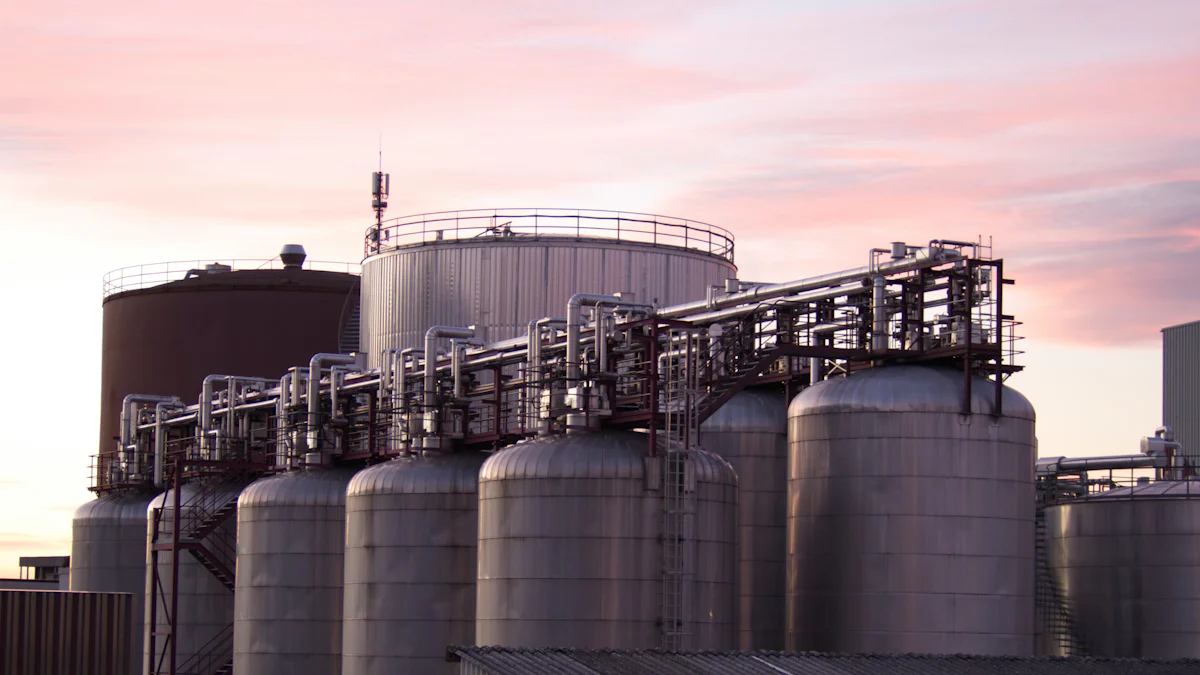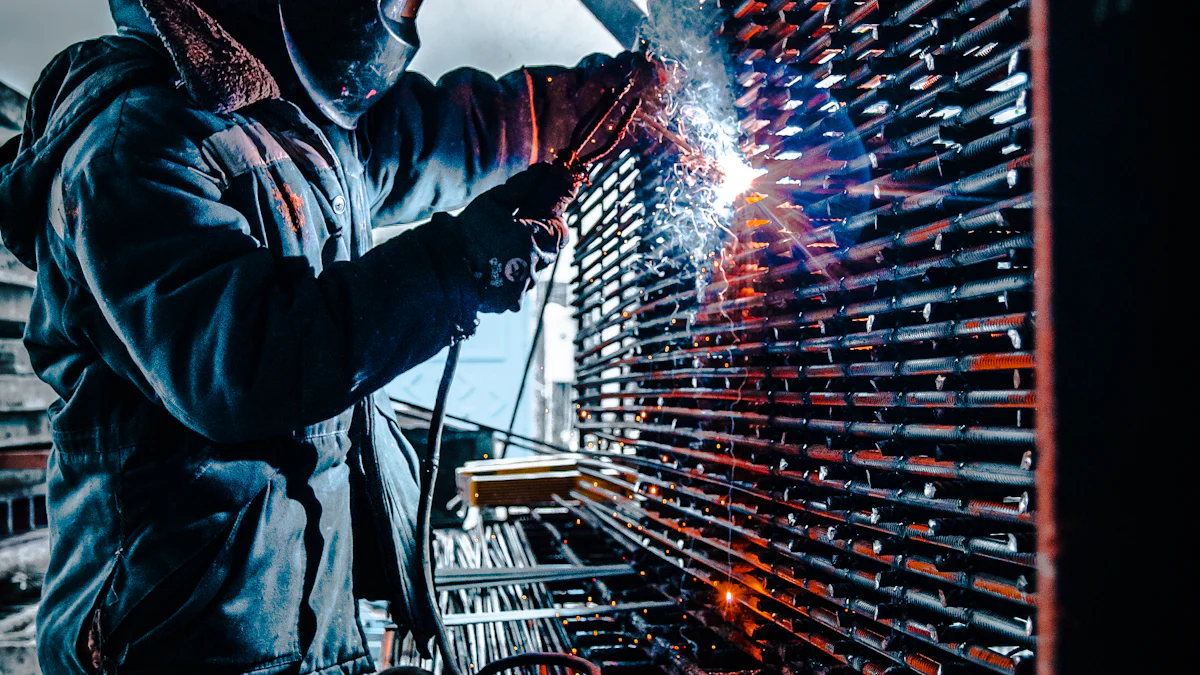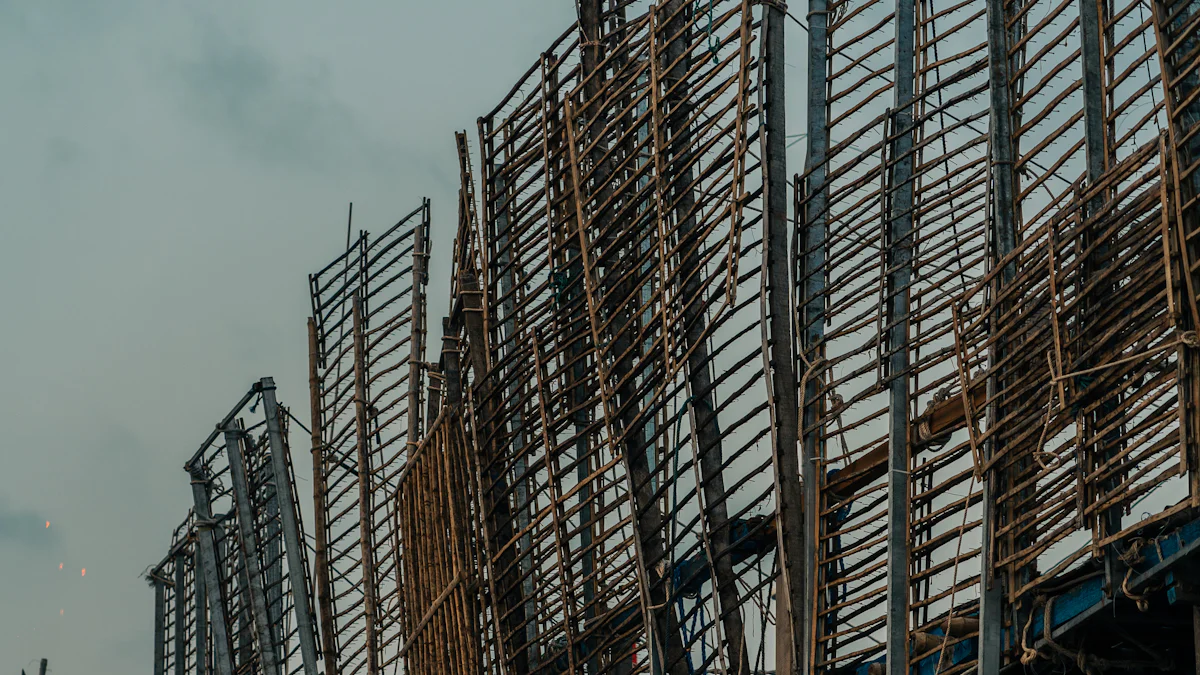Asia's Top Stainless Steel Casting Trends Revealed

Asia dominates the global stainless steel Investment Casting market, driven by rapid advancements in technology and growing demand across industries. Manufacturers in the region adopt innovative practices to enhance efficiency and meet the rising need for high-quality components. Sustainability initiatives also play a significant role, as companies focus on eco-friendly production methods. Understanding these trends is essential for businesses aiming to thrive in this competitive landscape. Asia's top stainless steel investment casting supplier continues to set benchmarks, showcasing the region's leadership in this dynamic industry.
Key Takeaways
- Embrace automation and robotics to enhance precision and productivity in stainless Steel Casting processes.
- Leverage IoT technology for real-time monitoring to improve quality control and operational efficiency.
- Invest in the development of high-performance alloys to meet the specific demands of industries like aerospace and automotive.
- Utilize 3D printing for mold creation to reduce production time and costs while increasing customization capabilities.
- Adopt eco-friendly manufacturing practices to minimize waste and emissions, aligning with global sustainability goals.
- Capitalize on the growing demand for stainless steel components in the expanding healthcare and renewable energy sectors.
- Diversify supply chains to mitigate risks and enhance resilience against market fluctuations.
Technological Advancements Shaping Asia's Stainless Steel Casting Market

Automation and Smart Manufacturing
Integration of robotics in casting processes
Robotics has transformed the stainless steel casting industry in Asia. Manufacturers now use robotic systems to handle repetitive and labor-intensive tasks. These systems improve precision and reduce human error during production. Robots also enhance workplace safety by taking over hazardous operations, such as handling molten metal. This shift allows companies to achieve consistent quality while increasing productivity. Asia's top stainless steel investment casting supplier has embraced robotics to maintain its competitive edge in the global market.
Use of IoT for real-time monitoring and quality control
The Internet of Things (IoT) plays a crucial role in modernizing casting processes. Sensors embedded in equipment collect real-time data on temperature, pressure, and other critical parameters. This data helps manufacturers monitor operations and identify potential issues before they escalate. IoT-enabled systems also ensure that products meet strict quality standards by providing detailed insights into every stage of production. Companies leveraging IoT technology can optimize efficiency and minimize waste, further solidifying their position in the competitive market.
Material and Process Innovations
Development of high-performance alloys
Asian manufacturers continue to develop high-performance alloys to meet the growing demand for durable and lightweight components. These alloys offer superior strength, corrosion resistance, and thermal stability, making them ideal for industries like aerospace and automotive. By investing in research and development, companies create materials that cater to specific applications, ensuring better performance and longer product lifespans. This focus on innovation strengthens Asia's reputation as a leader in stainless steel casting.
Advancements in 3D printing for mold creation
3D printing has revolutionized mold creation in the casting industry. This technology enables manufacturers to produce complex and intricate molds with unmatched accuracy. Traditional mold-making methods often require significant time and resources, but 3D printing reduces production timelines and costs. Asian companies adopt this technology to stay ahead in the competitive market. The ability to create custom molds quickly allows manufacturers to respond to client demands more efficiently, further enhancing their market position.
Industry-Specific Demand Driving Growth
Automotive and Aerospace Applications
Lightweight, durable components for electric vehicles and aircraft
The automotive and aerospace industries in Asia demand lightweight and durable stainless steel components. Electric vehicles (EVs) require parts that reduce overall weight while maintaining strength and efficiency. Stainless steel castings meet these requirements by offering excellent durability and corrosion resistance. Aircraft manufacturers also rely on these components to enhance fuel efficiency and ensure safety. Asia's top stainless steel investment casting supplier plays a pivotal role in meeting this demand by producing high-quality parts tailored to these industries.
High-precision parts for advanced transportation technologies
Advanced transportation technologies, such as autonomous vehicles and next-generation aircraft, require high-precision stainless steel parts. These components must meet strict tolerances to ensure optimal performance and reliability. Manufacturers in Asia invest in cutting-edge casting techniques to achieve the required precision. By delivering superior products, Asia's top stainless steel investment casting supplier supports the growth of these innovative transportation solutions.
Medical and Healthcare Sector
Stainless steel surgical instruments and implants
The medical sector relies heavily on stainless steel for surgical instruments and implants due to its biocompatibility and resistance to corrosion. Asian manufacturers produce a wide range of high-quality medical-grade stainless steel components. These include precision-engineered surgical tools and durable implants designed for long-term use. The expertise of Asia's top stainless steel investment casting supplier ensures that healthcare providers receive reliable and safe products.
Expansion of healthcare infrastructure across Asia
Healthcare infrastructure in Asia is expanding rapidly, driven by population growth and increased investment in medical facilities. This expansion fuels the demand for stainless steel components used in hospital equipment and construction. Manufacturers in the region respond by scaling production and maintaining high standards of quality. Their efforts contribute to the development of modern healthcare systems across Asia.
Energy and Construction Industries
Renewable energy projects requiring durable components
Renewable energy projects, such as wind and solar power installations, require stainless steel components that can withstand harsh environmental conditions. Asian manufacturers supply durable castings for turbines, solar panel mounts, and other critical equipment. These components ensure the longevity and efficiency of renewable energy systems. Asia's top stainless steel investment casting supplier supports the transition to sustainable energy by providing reliable solutions for these projects.
Rising construction activities demanding high-performance materials
The construction industry in Asia is experiencing significant growth, with numerous infrastructure projects underway. Stainless steel castings are essential for building durable structures and ensuring safety. High-performance materials are used in bridges, skyscrapers, and industrial facilities to meet the demands of modern construction. Manufacturers in Asia address this need by producing robust and versatile stainless steel components.
Sustainability as a Key Market Driver

Eco-Friendly Manufacturing Practices
Reduction of waste and emissions in casting processes
Asian manufacturers prioritize reducing waste and emissions in stainless steel casting processes. They implement advanced filtration systems to capture pollutants and minimize environmental impact. Many companies also optimize production workflows to decrease material wastage. By adopting cleaner practices, manufacturers contribute to a healthier environment while meeting regulatory standards. These efforts align with global sustainability goals and enhance the industry's reputation.
Adoption of energy-efficient technologies
Energy-efficient technologies play a crucial role in sustainable manufacturing. Asian stainless steel casting facilities invest in modern equipment designed to consume less energy. Induction furnaces, for example, provide precise temperature control while reducing energy usage. Additionally, manufacturers use heat recovery systems to repurpose excess energy generated during production. These innovations lower operational costs and reduce the carbon footprint of casting operations, making them more sustainable.
Recycling and Circular Economy
Increased use of recycled stainless steel in production
Recycling has become a cornerstone of sustainable stainless steel casting. Asian manufacturers increasingly rely on recycled stainless steel as a raw material. This approach conserves natural resources and reduces the need for mining. Recycled materials maintain the same quality and performance as newly produced stainless steel, ensuring no compromise in product standards. By embracing recycling, manufacturers support a circular economy and promote resource efficiency.
Government policies promoting sustainable practices
Governments across Asia actively encourage sustainable practices in the stainless steel casting industry. Policies and incentives drive companies to adopt eco-friendly technologies and reduce environmental impact. Tax benefits, grants, and subsidies reward businesses that prioritize sustainability. These measures motivate manufacturers to innovate and comply with environmental regulations. The collaboration between governments and the industry fosters a greener future for stainless steel casting in Asia.
Regional Dynamics and Market Opportunities
China's Role as Asia's Top Stainless Steel Investment Casting Supplier
Investments in advanced manufacturing facilities
China has solidified its position as Asia's top stainless steel investment casting supplier by heavily investing in advanced manufacturing facilities. These facilities incorporate state-of-the-art technologies, such as automation and precision casting equipment, to enhance production efficiency. Manufacturers focus on upgrading their infrastructure to meet the growing demand for high-quality stainless steel components. This commitment to innovation ensures that Chinese suppliers maintain a competitive edge in the global market.
Export opportunities driven by global demand
Global demand for stainless steel castings continues to rise, creating significant export opportunities for Chinese manufacturers. Industries such as automotive, aerospace, and construction rely on these components for their durability and performance. China's ability to produce high-quality castings at competitive prices makes it a preferred supplier for international markets. By leveraging its robust production capabilities, China strengthens its role as a key player in the global stainless steel casting industry.
Emerging Markets in Southeast Asia
Growth of manufacturing hubs in Vietnam and Thailand
Southeast Asia is witnessing the rapid growth of manufacturing hubs, particularly in Vietnam and Thailand. These countries attract businesses with their skilled labor force and cost-effective production environments. Manufacturers establish facilities in these regions to capitalize on the increasing demand for stainless steel castings. The development of these hubs contributes to the diversification of Asia's stainless steel casting market, reducing reliance on traditional manufacturing centers.
Government incentives attracting foreign investments
Governments in Southeast Asia actively promote foreign investments through various incentives. Tax breaks, subsidies, and streamlined regulations encourage companies to set up operations in the region. These policies create a favorable business environment, driving the expansion of the stainless steel casting industry. By fostering foreign investments, Southeast Asian countries position themselves as emerging leaders in the global market.
Trade Policies and Supply Chain Diversification
Effects of tariffs and trade agreements on the casting industry
Tariffs and trade agreements significantly impact the stainless steel casting industry in Asia. Protective tariffs imposed by certain countries can increase production costs and limit export opportunities. Conversely, trade agreements often reduce barriers, facilitating smoother transactions between nations. Manufacturers must navigate these policies carefully to maintain profitability and competitiveness in the global market.
Strategies to reduce dependency on single markets
Diversifying supply chains has become a priority for manufacturers in Asia. Relying on a single market poses risks, especially during economic or political disruptions. Companies adopt strategies such as sourcing raw materials from multiple suppliers and expanding their customer base across different regions. This approach enhances resilience and ensures stability in the face of market fluctuations. Asia's top stainless steel investment casting supplier exemplifies this strategy by maintaining a diverse and robust supply chain network.
Asia's stainless steel investment casting market continues to grow, fueled by advancements in technology, rising demand across industries, and a strong focus on sustainability. Businesses that embrace these trends can unlock new opportunities and strengthen their competitive position. Leveraging innovations like automation and eco-friendly practices allows companies to enhance efficiency and meet evolving market needs. By staying informed about regional dynamics and industry drivers, businesses can align their strategies with market demands. This proactive approach ensures long-term growth and success in an ever-changing global landscape.















